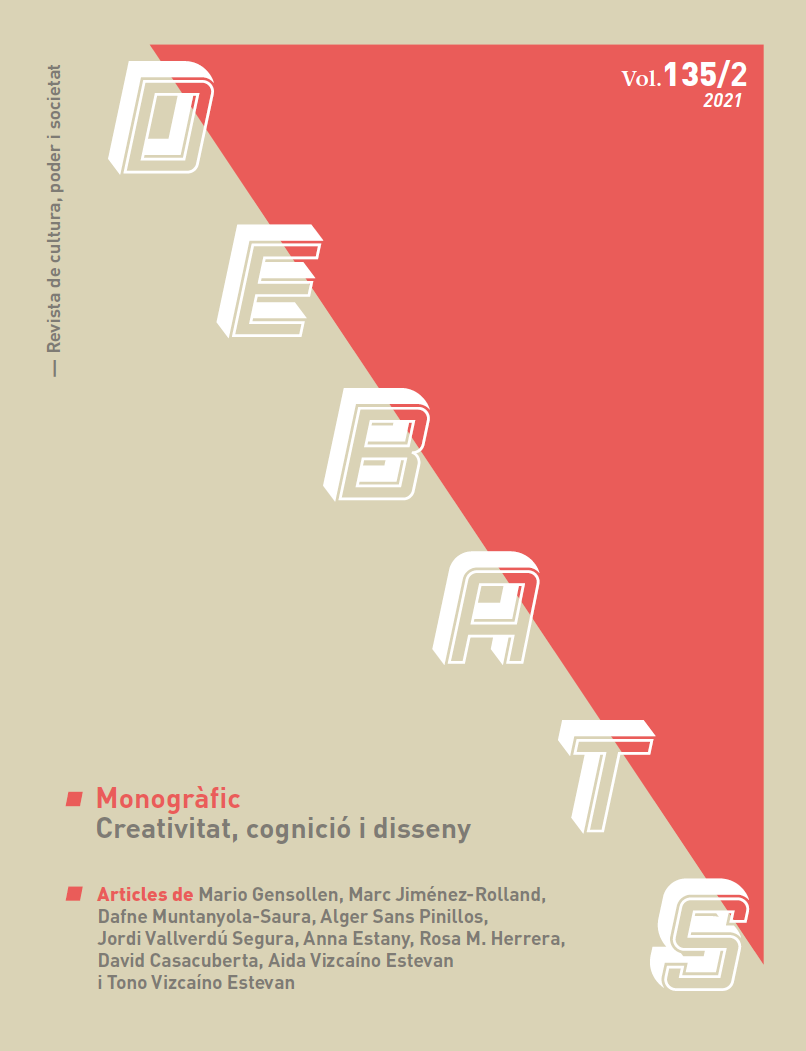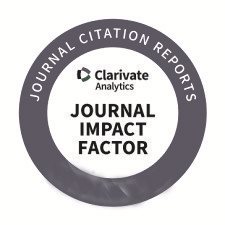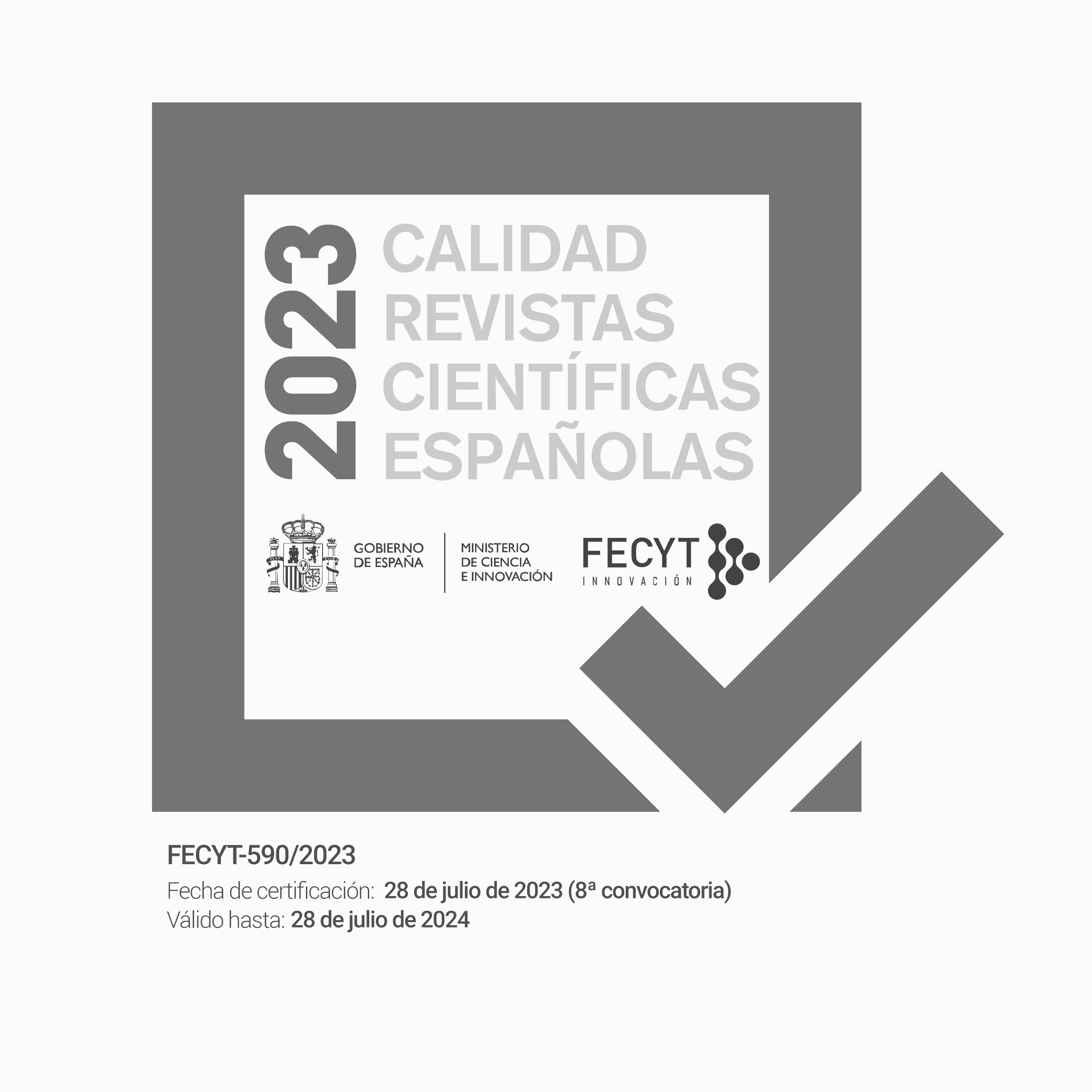Què #®¥§≠$@ és la creativitat?
DOI:
https://doi.org/10.28939/iam.debats-135-2.3Paraules clau:
creativitat, abducció, cognició mixta, constrenyedors, disparadors, multiheurística.Resum
La creativitat és el sant grial de les ciències cognitives i té especial importància per als investigadors de les ciències de la computació i la intel·ligència artificial. És obvi que la creativitat forma part essencial de la intel·ligència, tot i que la majoria d’estudis que intenten explicar-la o fins i tot replicar-la han fallit. En el present article proposem dues aproximacions innovadores: d’una banda, entendre els processos cognitius com a seguidors de regles o heurístiques, tot i que d’una manera flexible o fins i tot contradictòria o caòtica, però que ens mena en qualsevol dels casos a un context d’ús desacomplexat de multiheurístiques, que és el que hem denominat la «cognició mixta»; d’altra banda, proposem un mecanisme poc explorat de forma general en la literatura acadèmica cognitiva per tal de servir de punt de fulcre entre els models antics i una visió alternativa: l’abducció. Mitjançant aquestes dues estratègies, alhora que analitzant casos específics relacionats amb la capacitat creativa dels éssers humans, podem albirar un nou paradigma cognitiu més realista i sincer amb les capacitats humanes, fet que permetrà en un futur no gaire llunyà el disseny de sistemes de raonament artificials més potents i complexos.
Descàrregues
Referències
Alchourrón, C. E., Gärdenfors, P., & Makinson, D. (1985). On the logic of theory change: Partial meet contraction and revision functions. Journal of Symbolic Logic, 50(2), 510–530. https://doi.org/10.2307/2274239
Aliseda, A. (2014). La lógica como herramienta de la razón. Razonamiento ampliativo en la creatividad, la cognición y la inferència. UK: Milton Keynes.
Aliseda, A (2006). Abductive Reasoning: Logical Investigations into Discovery and Explanation. Netherlands: Springer.
[A. C.] Rodríguez, [A] Aliseda i [A] Arauz. (2008). Medicina y lógica: el proceso diagnóstico en neurología. Ludus Vitalis, 30, 135-163.
Aristòtil. (1995). Analíticos primeros. Tratados de lógica (Órganon) II. Sobre la interpretación. Analíticos primeros. Analíticos segundos (trad. Miguel Candel Sanmartín). Madrid: Editorial gredos.
Felipe Criado-Boado, Diego Alonso-Pablos, Manuel J. Blanco, Yolanda Porto, Anxo Rodríguez-Paz, Elena Cabrejas, Elena del Barrio-Álvarez & Luis M. Martínez (2019) “Coevolution of visual behaviour, the material world and social complexity, depicted by the eyetracking of archaeological objects in humans”, Nature Scientific Reports, Vol., Art. Num.: 3985
Casacuberta, David; Ayala, Saray & Vallverdú, Jordi (2010). Embodying cognition: a morphological perspective. Jordi Vallverdú (Ed.) Thinking Machines and the Philosophy of Computer Science: Concepts and Principles, (Editor i autor). USA: IGI Global Group, 344-366.
Csikszentmihalyi, Mihaly (1996). Creativity : Flow and the Psychology of Discovery and Invention. New York: Harper Perennial
Currey, M. (2014) Rituales cotidianos. Cómo trabajan los artistes. Madrid: Turner.
Dilman, İ. (1973). Induction and Deduction. Oxford: Basil Blackwell.
Elgin, C.Z. (2019) True Enough. Boston: MIT Press.
Estany,A. (2011). The Thesis of Theory-Laden Observation in the Light of Cognitive Psychology. Philosophy of Science 68, 203-217.
Feyerabend, P. (2018). Philosophy of Nature. Cambridge: Polity Pr.
Feyerabend, P. (2010). Against Method. London: Verso.
Feyerabend, P. (1987). Creativity: A Dangerous Myth. Critical Inquiry 13 (4), 700-711.
Gabbay, M i Wood, J. (2005). A practical Logic of Cognitive Systems. The Reach of Abduction. Insight and Trial (volume 2). Amsterdam: Elsevier.
Grosser, M. (1979). The Discovery of Neptune. New York: Dover Publications, Inc.
Hanson, N. R. (1972). Patterns of Discovery. New York: Cambridge University Press.
Hanson, N. R. (1971). Observation and Explanation: A guide to Philosophy of Science. London: George Allen & Unwin, Ltd.
Harman, G. (1965). The Inference to the Best Explanation. The Philosophical Review, 74 (1), 88-95.
Hintikka, J. (2007). Socratic Espistemology. Explorations of Nowledge-Seeking by Questioning. Cambridge: Cambridge University Press.
Hintikka, J. (1999). Inquiry as Inquiry. A Logic of Scientific Discovery. Dordrecht: Springer Science+Business Media Dordrecht.
Hintikka, J. (1998). What Is Abduction? The Fundamental Problem of Contemporary Epistemology. Transactions of the Charles Sanders Peirce Society, 34, 503-533.
Hookway, C. (1992). Perice. London: Routledge.
Huang, M. & Jaszczolt, K.M. (Eds.) (2018). Expressing the Self. Cultural Diversity and Cognitive Universals, Oxforfd: OUP.
Kant, I. (1961). Critique of Pure Reason (trad. Norman Kemp Smith). London: Macmillan.
Kharkhurin, A. V., & Wei, L. (2015). The role of code-switching in bilingual creativity. International Journal of Bilingual Education and Bilingualism, 18(2), 153–169.
King, M. J. (1997). Apollo 13 creativity: In‐the‐box innovation. The Journal of creative behavior, 31(4), 299-308.
Kuhn, T. (1996). The Structure of Scientific Revolutions. Chicago: Chicago University Press.
Lakatos, I. (1976). Proofs and Refutations. The Logic of Mathematical Discovery. Cambridge: Cambridge University Press.
Łukasiewicz, J. (1970). Creative Elements in Science. Selected Works. Amsterdam: North-Holland Publishing Company, 1-15.
Magnani, L. (2018). The Urgent Need of a Naturalized Logic. Philosophies, 3 (44). DOI: 10.3390/philosophies3040044
Magnani, L. (2018ᵃ). Eco-Cognitive Computationalism: From Mimetic Minds to Morphology-Based Enchancement of Mimetic Bodies. A Etropy 20, 430-446.
Magnani. L. (2017). The Abductive Structure of Scientific Creativity. An Essay on the Ecology of Cognition. Switzerland: Springer.
Magnani, L. (2016). The eco-cognitive model of abduction II. Irrelevance and implausibility exculpated. Journal of Applied Logic, 15, 94-129.
Magnani, L. (2015). The eco-cognitive model of abduction. ᾿Απαγωγή now: Naturalizing the logic of abduction. Journal of Applied Logic, 13, 285-315.
Magnani, L. (2009). Abductive Cognition. The Epistemologival and Eco-Cognitive Dimensions of Hipotetical Reasoning. Heidelberg/Berlin: Springer.
Nepomuceno-Fernández, Soler-Toscano i Velázquez-Quesada. (2014). The Fundamental Problem of Contemporary Epistemology. Teorema, 23 (2), 89-103.
Nisbett, R. (2004). The geography of thought: How Asians and Westerners think differently... and why. USA: Simon and Schuster.
Niiniluoto, I. (2004). Representation and Truthlikeness. Foundations in Science, 19 (4), 375-379. DOI 10.1007/s10699-014-9346-2
Park, W. (2017). Abduction in Context. The Conjectural Dynamics of Scientific Reasoning. New York: Springer International Publishing. DOI: 10.1007/978-3-319-48956-8
Pearl, J., & Mackenzie, D. (2018). The book of why: the new science of cause and effect. Basic Books.
Peirce, C. S. (1931-1935). Collected Papers of Charles Sanders Peirce. Volumes 1–6 (C. Hartshorne, P. Weiss, Eds.). Cambridge: Harvard University Press; and (1958) Volumes 7–8 (A.W. Burks Ed.) Cambridge: Harvard University Press.
Putnam, H. (2002). The Collapse of Fact/Value Dichotomy and other essays. Cambridge: Harvard University Press.
Roberts, R. M. (1989). Serendipity: Accidental discoveries in science. Serendipity: Accidental Discoveries in Science, by Royston M. Roberts, pp. 288. ISBN 0-471-60203-5. Wiley-VCH, June 1989., 288.
Rivadulla, A. (2015). Meta, método y mito en la ciencia. Madrid: Editorial Trotta.
Sans, A. (2019). Rigor Mortis: Què passa quan una teoria nega allò que no li pertany o què passa quan un coneixement es veu obligat a adaptar-se al que no pot. Comentari crític de «Construir en la foscor. Teoria i observació en ciència i en psicoanàlisi» de R. Caper. A Revista Catalana de Psicoanàlisi 35 (2), pp. 141-152.
Sans, A. (2017). El lado epistemológico de las abducciones: La creatividad en las verdades-proyectadas. Revista iberoamericana de argumentación, 15, 77-91. Doi: 10.15366/ria
Sawyer, R. K. (2011). Explaining creativity: The science of human innovation. Oxford University Press.
Schroeder, M. & Vallverdú, J. (2015). Situated Phenomenology and Biological Systems: Eastern and Western Synthesis. Progress in Biophysics and Molecular Biology, 119(3): 530-537.
Shanahan, M. (2005). Perception as Abduction: Turning Sensor Data Into Meaningful Representation. Cognitive Science, 29, 103–134
Shelley, C. (1996). Abductive Reasoning in Archaelogy. A Philosophy of Science, 63 (2), 278-301. http://www.jstor.org/stable/188474
Schurz, G. (2008). Patterns of Abduction. Synthese, 164, 201-234. DOI 10.1007/s11229-007-9223-4
Simon, H. (1977). Does Scientific Discovery Have a Logic? Models of Discovery. Holland: Pallas Paperback, 326–337
Thagard, P. (1988). Computational Philosophy of Science. Massachusetts: MIT Press.
Urbański, M i Klawiter, A. (2018). Abduction: Some Conceptual Issues. Logic and Logical Philosophy, 27, 583-597.
Vallverdú, J., Talanov, M., Distefano, S., Mazzara, M., Tchitchigin, A., & Nurgaliev, I. (2016). A cognitive architecture for the implementation of emotions in computing systems. Biologically Inspired Cognitive Architectures, 15, 34-40.
Vallverdú, J. (2013).Programming Synthetic Innovation?. Revista Iberoamericana de Argumentación, 7: 1-12.
Vallverdú, J., (2017). Brains, language and the argumentative mind in Western and Eastern societies. The fertile differences between Western-Eastern argumentative traditions. Progress in Biophysics and Molecular Biology, 131: 424-431.
Vallverdú, J. & Schroeder, M. (2017). Lessons from Culturally Contrasted Alternative Methods of Inquiry and Styles of Comprehension for the New Foundations in the Study of Life. Progress in Biophysics and Molecular Biology¸ 131: 463-468.
Vallverdú, J. (2019). ¿Nazis kantianos? El homo politicus desde la racionalidad limitada o La banalidad de la Ética. Mario Gensollen (ed) (2018). Democracia y Conocimiento. México: Ed. Univ. Aguascalientes. Pàg.: 55-72.
Vallverdú, Jordi, & Müller, Vincent C. (Eds.) (2019). Blended Cognition.The Robotic Challenge, Berlin: Springer.
Zenil, H., & Gauvrit, N. (2018). Algorithmic cognition and the computational nature of the mind. Unconventional Computing: A Volume in the Encyclopedia of Complexity and Systems Science, Second Edition, 641-649.
Descàrregues
Publicades
Com citar
Número
Secció
Llicència
Sense perjudici del que disposa l'article 52 de la Llei 22/1987 d'11 de novembre de Propietat Intel·lectual, BOE del 17 de novembre de 1987, i conforme a aquest, els/les autors o autores cedeix/en a títol gratuït els seus drets d'edició, publicació, distribució i venda sobre l'article, per tal que siga publicat a Debats. Revista sobre cultura, poder i societat.
Debats. Revista de cultura, poder i societat es publica sota el sistema de llicències Creative Commons segons la modalitat “Reconeixement – NoComercial (by-nc): Es permet la generació d’obres derivades sempre que no se’n faça un ús comercial. Tampoc no es pot fer servir l’obra original amb finalitats comercials”.
Així, quan l’autor/a envia la seva col·laboració, accepta explícitament aquesta cessió de drets d’edició i de publicació. Igualment autoritza Debats. Revista de cultura, poder i societat la inclusió del seu treball en un fascicle de la revista perquè es puga distribuir i vendre.











